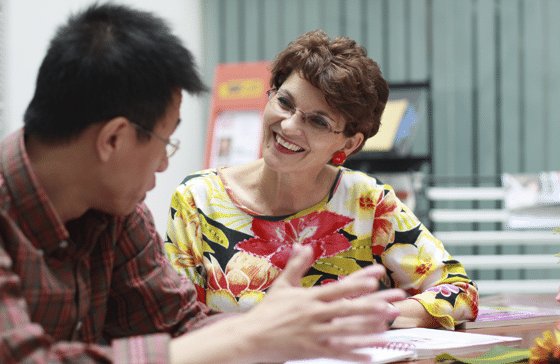
Carrie, a special education co-teacher, rushes into Peter’s room ten minutes late for their first meeting. She throws her purse down and sits with the same motion. “Sorry I’m late. We don’t have much time, so why don’t you start by telling me your problem.” As she finishes the sentence, Carrie opens her purse and rummages through it. She pulls out a stick of gum as Peter begins to tell her about Cal, a student in his class who has difficulty staying on task. Carrie offers a piece of gum to Peter who declines it. As Peter continues talking, Carrie gets up and searches for the waste basket to deposit the gum wrapper. Peter sums up that he is “very concerned” about Cal. “So what concerns you most?” Carrie asks, as she glances at her watch.
Was rapport established? Most likely, Peter will not perceive this first meeting as particularly positive. He may not even feel comfortable working with Carrie in the future. What might Carrie have done differently to build rapport?
The key to building rapport—especially when solving problems—is to make your colleague feel accepted, supported, and comfortable sharing and solving problems. The rule of thumb when establishing rapport is to be authentic and genuine in your desire to engage in a collaborative, problem-solving relationship. You must be sincere in wanting to listen, and you must communicate that this is time well spent.
There are some general strategies that tend to communicate acceptance:
- Use his or her name.
- Maintain appropriate eye contact.
- Appear calm, yet energized.
- Listen actively — paraphrase, summarize, clarify, and ask for more detail.
- Show interest by leaning forward and nodding.
- Ask easy questions at first and ask permission when you want to pose questions of a sensitive nature.
- Give credit to your colleague for his or her ideas and accomplishments.
- Ensure that he or she has the freedom to accept or reject any aspect of the discussion.
- Refrain from making judgments.
- Eliminate jargon terms and acronyms of which the individual might not have knowledge.
In addition, some collaborating professionals have found that “little things” go a long way in promoting a shared sense of goodwill. Here are some examples:
- Comment on something of interest in the classroom, such as a bulletin board, exemplary student work, or a particular learning activity.
- Drop your colleague a note prior to the first meeting to let him or her know you are looking forward to the meeting. You might indicate in the note what can be expected to occur at that meeting.
- Offer information about yourself when appropriate. Let your colleague know you are a “real” person.
- Do an occasional favor, such as dropping off a book to the library or a message to the office on your way out of the meeting. Or, if you run across an interesting journal article, make a copy and pass it along.
- Keep all notes you take in open view (in fact, you might even ask him or her if certain things are worth writing down). Email a copy of your notes to your colleague.
- Share what you know that is professionally pertinent about students in question. Teachers can find it very irritating when specialists horde information about the student or make vague references to a “file” that is off limits to them.
For more strategies and tips for teacher collaboration, see https://www.exinn.net/strategies-for-teacher-collaboration/
